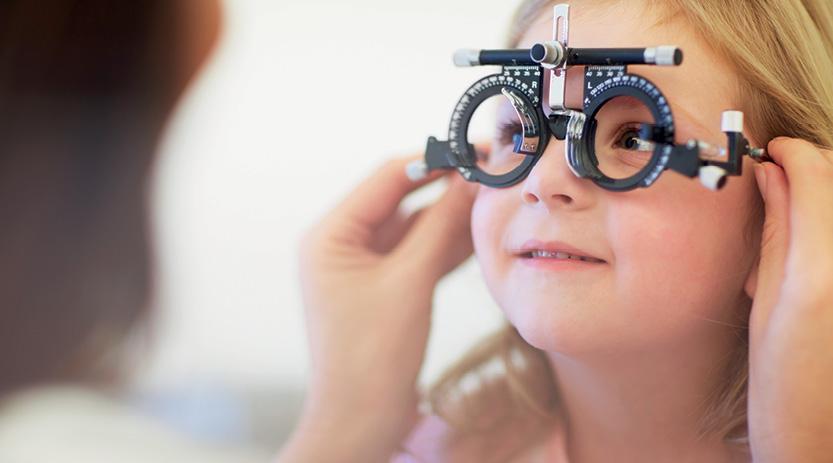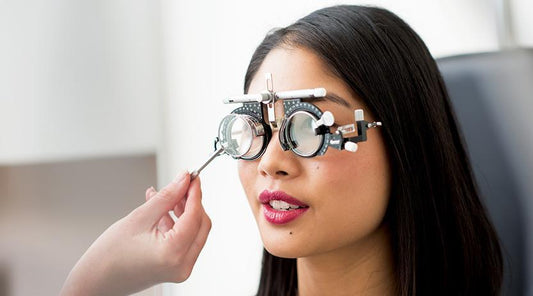Kids eye tests: when to see an optometrist

Did you know babies learn more from what they see than all their other senses combined? It’s no surprise, then, that vision is vital for a young person’s development.
With research showing that 20% of children have undetected vision problems, making time to take your little one to the optometrist is a smart move. They’ll be able to spot and correct any vision problems your child mightn’t be able to communicate that they’re struggling with – so they can keep learning from the world around them.
When should your children have a comprehensive eye test?
- Before they start school (at around 5 or 6 years old)
- Every year after that if they have no symptoms, as young eyes change as they grow
- As soon as you can, if you’re worried about their eye health.
A test fit for little eyes
An eye test for young children won’t necessarily involve the rows of letters we’re used to as adults. Instead, your optometrist will adapt a series of vision tests to suit their age.
They’ll examine clarity of vision (or visual acuity), their ability to focus and how well they perceive depth and colour – using cards with symbols, pictures or numbers if letters are still a little too grown-up.
Your optometrist will also use tools and devices to check for the health of your child’s eyes, making sure there are no signs of eye disease or other abnormalities.

Common eye conditions in kids
Myopia (or short-sightedness), hyperopia (or long-sightedness) and astigmatism (or distorted vision) are the most common vision problems young people face. The good news? An optometrist can easily catch and correct them.
Other things to look out for include:
Amblyopia (lazy eye)
Where there’s decreased vision in one or both eyes. Lazy eyes can usually be successfully treated without any long-term vision problems if detected early enough.
Strabismus (turned eyes)
This occurs when the two eyes aren’t working together as a team. It can usually be corrected with exercises if caught early enough, otherwise it could lead to lazy eye or other long-term vision problems.
Convergence insufficiency
Sometimes eyes don’t work together when looking at near objects – causing discomfort or double vision when reading. This is called convergence insufficiency and is often picked up when children have difficulty reading at school. It’s usually easily treated with eye exercises.

The best treatment for any vision problems?
Detecting it early. So make sure you book an eye test if you’re worried that your child might have symptoms.
You might also like to read...
View all-
Do I need an eye test?
Having regular eye tests can help identify and solve any vision problems, and they're a great way to get ahead of any underlying issues.
Eye testDo I need an eye test?
Having regular eye tests can help identify and solve any vision problems, and they're a great way to get ahead of any underlying issues.
Read more -
What should I expect during my eye test?
When you first have an eye test, your optometrist will get the lowdown on your eyes, vision, health and lifestyle in order to tailor the test to you.
Eye testWhat should I expect during my eye test?
When you first have an eye test, your optometrist will get the lowdown on your eyes, vision, health and lifestyle in order to tailor the test to you.
Read more -
Eye tests and out-of-pocket expenses
Worried about the costs of getting your eyes tested? We’ve got good news. They’re usually bulk-billed if you’re covered by Medicare.
Eye testEye tests and out-of-pocket expenses
Worried about the costs of getting your eyes tested? We’ve got good news. They’re usually bulk-billed if you’re covered by Medicare.
Read more





